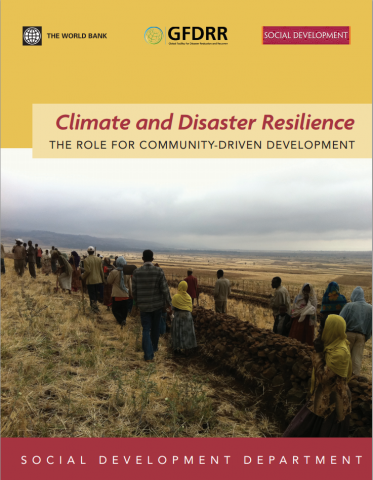Climate and Disaster Resilience: The Role of Community Driven Development


Community-driven development is an approach “… that gives control over planning decisions and investment resources to community groups and local governments.” Historically, programs using a CDD approach grew out of situations of crisis (financial shock, conflict, and even natural disasters) and were meant as transitional instruments for service delivery where governments (particularly newly installed administrations) lacked capacity to deliver services (Wong 2012). By optimizing the use of community actors, a CDD approach places less stress on government line agencies and at the same time is able to reach very large numbers of poor people. A CDD approach has traditionally been used by Social Funds, which are government agencies or programs that channel grants to communities for small-scale development projects. Social Funds typically finance a mixture of socioeconomic infrastructure (e.g., building or rehabilitating schools, water supply systems, and roads), productive investments (e.g., microfinance and income-generating projects), social services (e.g., supporting nutrition campaigns, literacy programs, youth training, and support to the elderly and disabled), or capacity-building programs (e.g., training for civil and local governments) (World Bank 2009). This paper examines the World Bank’s CDD portfolio to assess experience to date and to explore the potential for building the resilience of vulnerable communities to climate and disaster risk through CDD programs. It aims to be useful to both the Climate Change Adaptation/Disaster Risk Management practitioner as well as the CDD practitioner.
The paper assesses the scale of climate and disaster resilience support provided through CDD projects from 2001–11 and characterizes the forms of support provided. For the climate change adaption/disaster risk management (DRM) practitioner, it discusses the characteristics of a CDD approach and how they lend themselves to building local-level climate resilience. For the CDD practitioner, the paper describes the types of activities that support resilience building and explores future directions for CDD to become a more effective vehicle for reducing climate and disaster risk. Throughout the paper, project examples are used to demonstrate key points. While a number of resources are provided for working with communities on climate and disaster risk (see annex 1), this paper is not meant to be a detailed manual for integrating DRM and climate change adaption into CDD operations.
World Bank link
http://goo.gl/Ncch01
